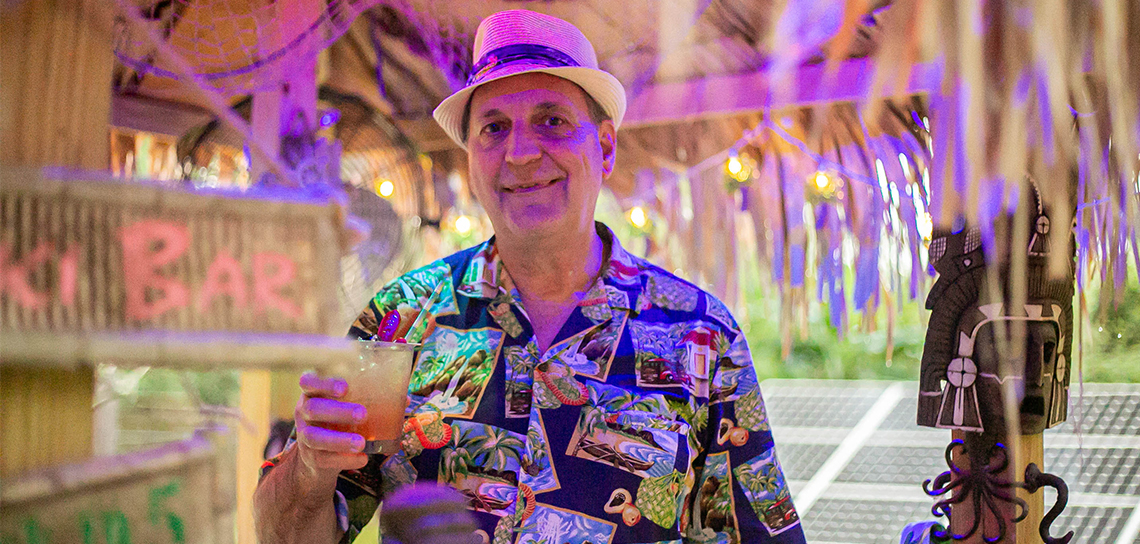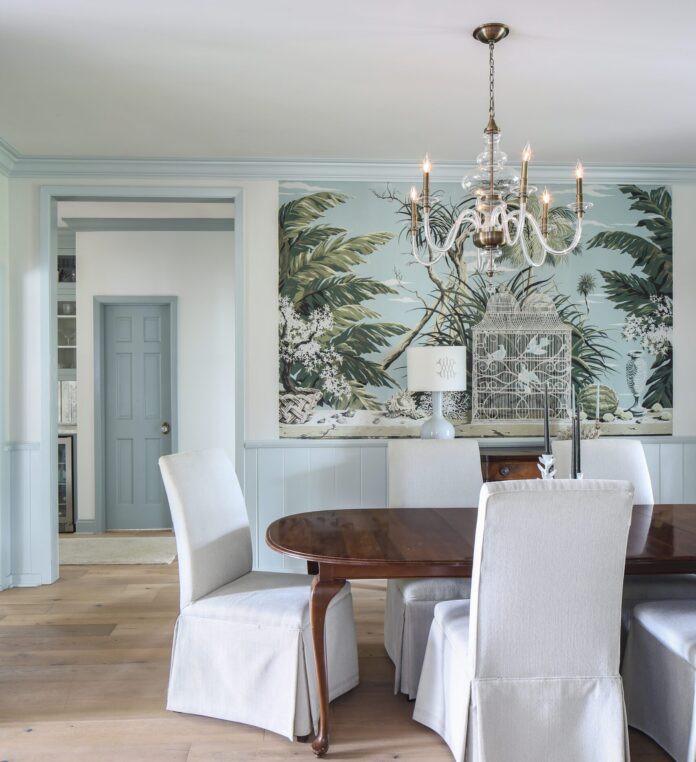South Pacific vibes meet south Louisiana hospitality in this backyard tiki bar
This year hasn’t been easy on the entertainment industry. Restaurants, bars and music venues that typically thrive in south Louisiana due to a culture deeply rooted in food, festivals and fun have suffered greatly because of pandemic restrictions. And these restrictions have changed the way people relax. With no place to go out, homeowners have invested in improvements to their houses so they can entertain more on their own turf. Many updated their interiors. A lot worked on their landscaping. Some even constructed outdoor kitchens and pool areas.
Jeff Shaw built a tiki bar.
“I really got interested in the tiki culture a number of years ago,” says Jeff, who acknowledges that tiki is not a typical hobby in Baton Rouge, but it’s a fun one. “Tiki bars and tiki culture are rising again in popularity, and I wanted to learn more about it. Now, whenever I travel, I visit a local tiki bar. I even went to my first tiki conference last year where I learned more about not only tiki drinks but also tiki art, music, culture and clothing.”
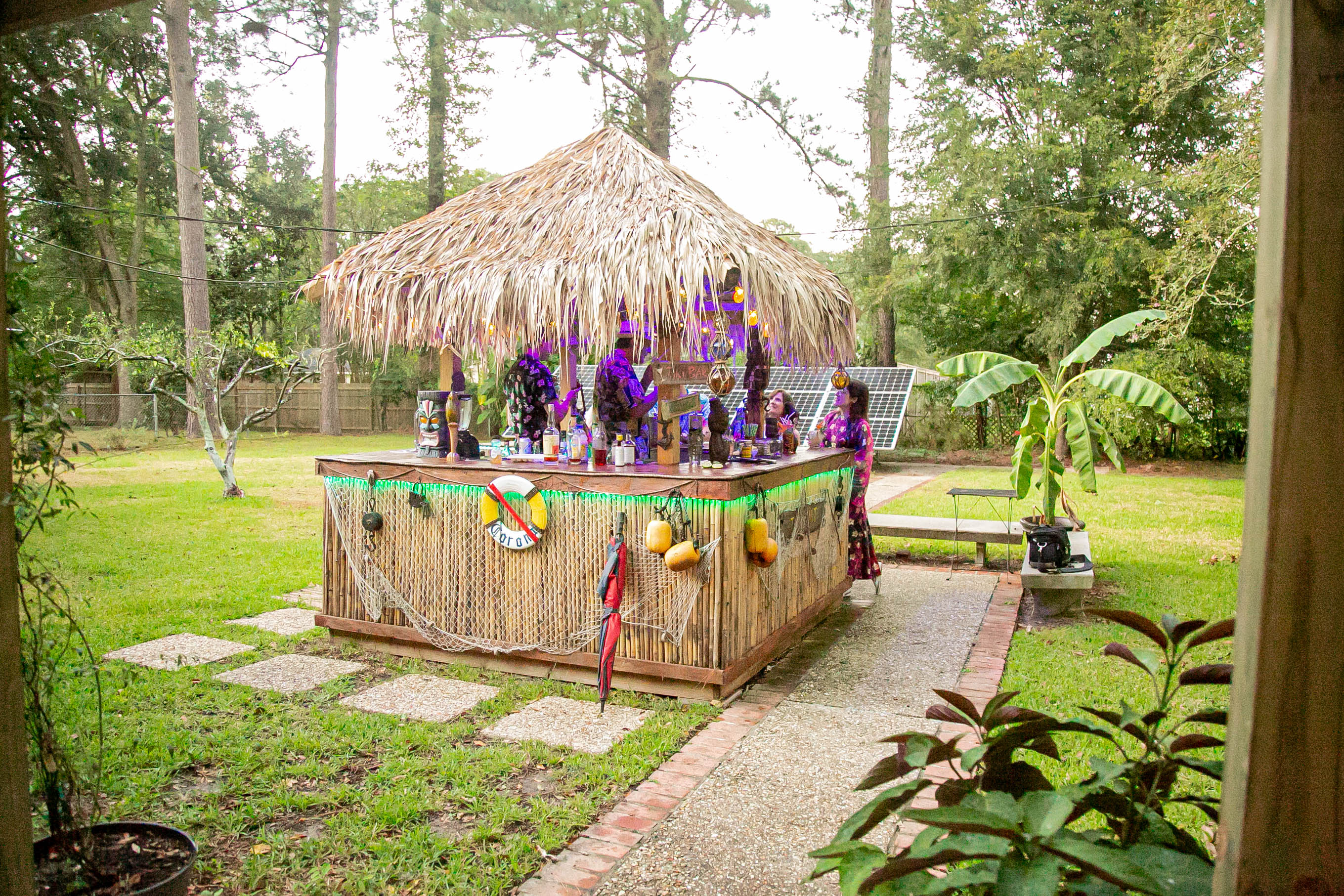
Jeff had already gotten the go-ahead from wife Laura to set up a makeshift tiki bar in their lush outdoor courtyard off Highland Road. (Actually, she came home one day and Jeff had screwed together a few lumber pallets and wrapped them with bamboo. But she gave it a chance.) This first version of a tiki bar was an experiment. It tested the “If you build it, they will come” theory from Field of Dreams. It worked. Soon, friends and family were flooding the backyard on weekends to sample tiki cocktails and enjoy the easygoing atmosphere. Jeff dreamed bigger.
“I was holding tiki parties twice a year, and more and more people seemed interested in it,” says Jeff, who credits the casual culture of tiki for its appeal. “After I came back from the conference, I drew up plans for a more permanent tiki bar from a picture I had seen,” he says. “I ordered all the materials and I got everything in right before the pandemic shut everything down.”
Jeff and friend Ray Gaspard constructed the bar using bamboo, palm thatching and other materials common in tiki. Décor includes items that look like they could have washed ashore; typical flotsam and jetsam elements. The hut is lit by white lights at night, and the drinks—which change each time the bar opens—are predominantly made with rum.
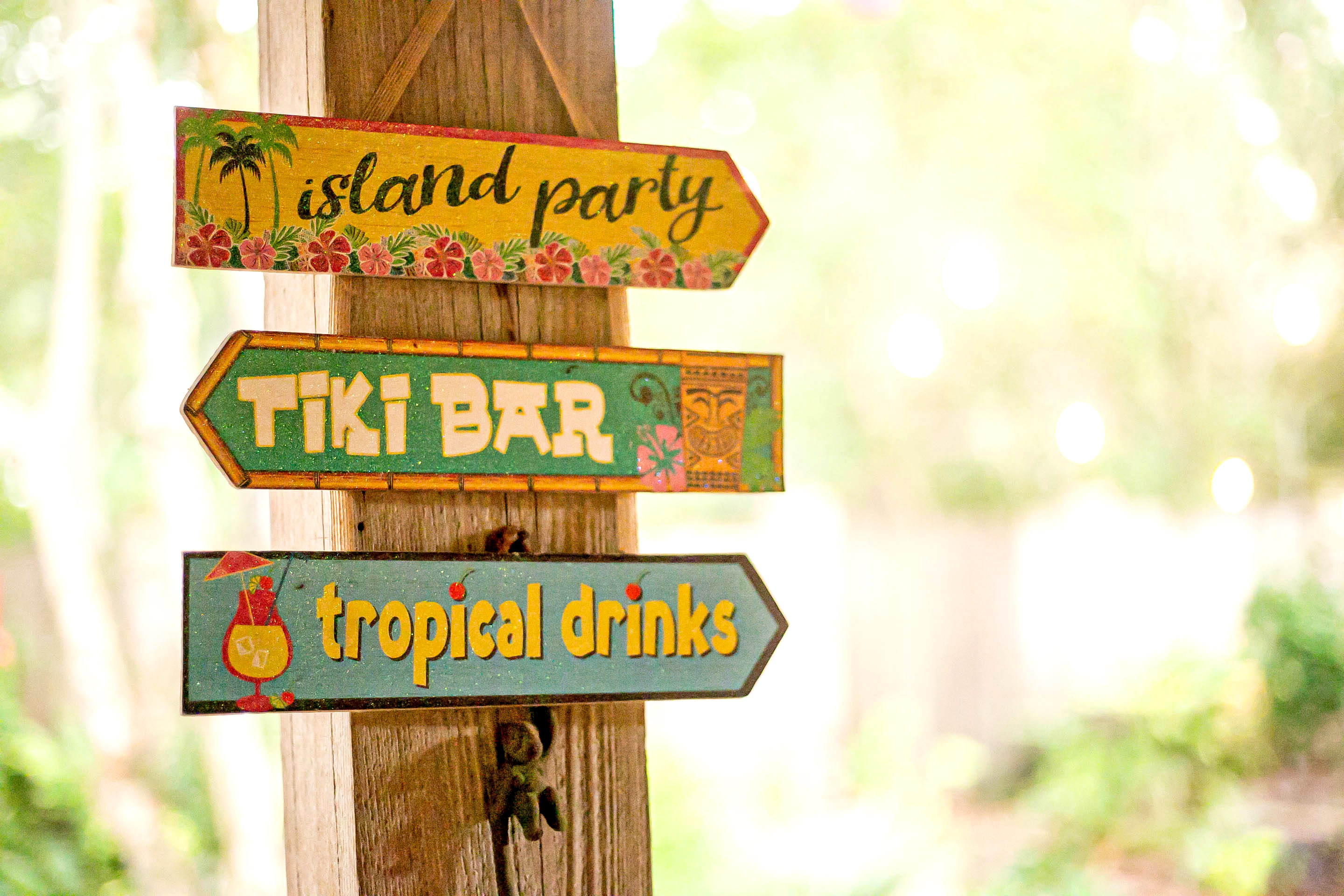
“Our tiki bar was finished and I was ready for our March party, then we went into Phase 1 and I couldn’t have more than 10 people over,” says Jeff. “We had a soft opening with just family and we had to wait for Phase 2. At first, I thought it was the worst thing ever, having built the tiki bar and not being able to have a party. But it evolved into a more casual summer with just a few friends over on the weekends hanging around and enjoying it. It became an afternoon escape.”
Once the Shaws could gather with more people, they hired a bartender and planned bigger. Their tiki party in mid-October pulled out all the stops, including guests dressed in Hawaiian clothes, specialty drinks and a fire artist spinning flaming fans. Local tiki mug artist Omar Girona came as a surprise guest and has made a new friend in Jeff.
“It was absolutely unreal to see that party happen in Baton Rouge,” says Girona, who has quit his drafting job to construct tiki mugs full time. His handcrafted ceramic mugs have sold all over the world under his Oakwash label, and many have become collectors’ items. But this Baton Rouge native typically travels to bars and parties in other cities to get his tiki fix. “I think the desire for tiki bars and tiki mugs has accelerated due to COVID. People just need an escape.”
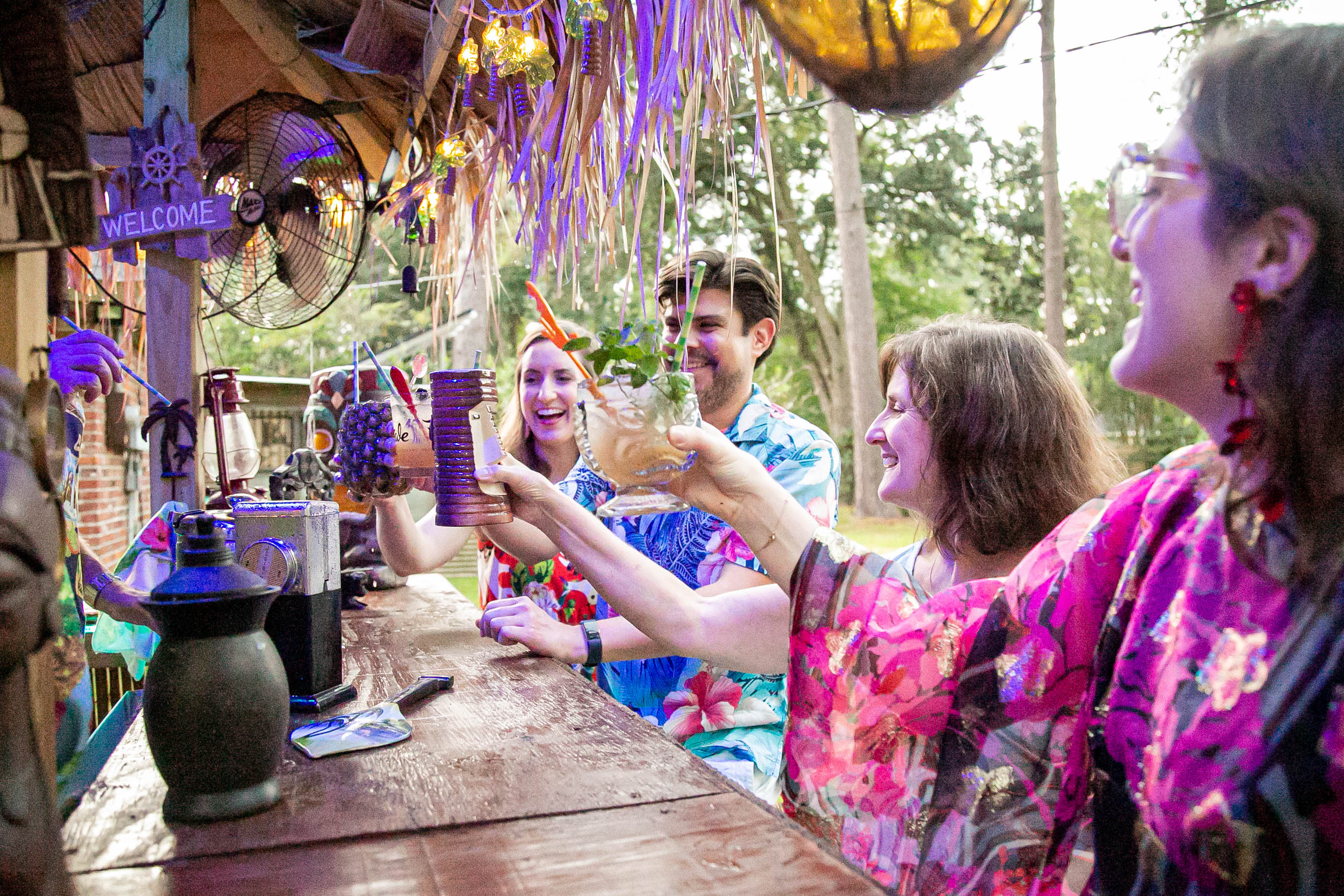
The tiki culture is based on escapism at its core. Popularized after World War II, when men and women returned from the Polynesian islands with nostalgia for the culture and Hollywood movies glamorized the South Pacific experience, tiki parties and tiki drinks became the rage. Kitschy and casual, island fever swept the United States in the 1950s and 1960s. Then tiki all but died in the decades after that. A recent resurgence in tiki has given those looking for a great escape hope and more than a little bit of happiness.
“I just love being surrounded by wonderful people in a laid-back atmosphere,” says Jeff, who is already planning his spring party to be bigger and better. “It’s a way to gather with friends and have fun all year round. And the drinks are pretty great too.”
Embark on your own island getaway at home with three of Jeff’s favorite tiki drink recipes:
BOO LOO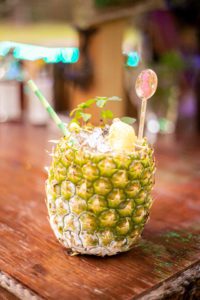
• Small chunks of fresh pineapple
• 2½ oz. unsweetened pineapple juice
• 1½ oz. fresh lime juice
• 1 oz. honey mix (equal parts honey and water)
• 1½ oz demerara rum
• 1½ oz gold Puerto Rican rum
• ¾ oz. 151-proof demerara rum
• ¾ oz. dark Jamaican rum
• 1½ oz. club soda
Blend all ingredients except club soda in blender until pineapple is liquefied. Add soda. Pour unstrained into a hollowed-out pineapple filled with crushed ice or into a 36-oz. snifter filled with crushed ice. Stir until well chilled and serve.
MAI TAI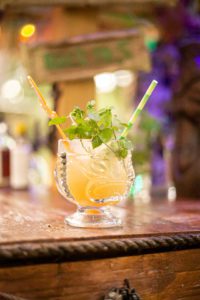
• 1 oz. fresh lime juice
• ½ oz. orange curaçao
• ¼ oz. orgeat syrup
• ¼ simple syrup
• 1 oz. dark Jamaican rum
• 1 oz. aged Martinique rum
Mix together all ingredients. Shake well with plenty of crushed ice. Pour unstrained into a double old-fashioned glass. Garnish with lime wedge and mint sprigs.
JET PILOT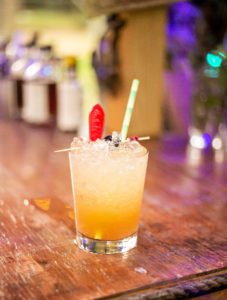
• ½ oz. fresh lime juice
• ½ oz. grapefruit juice
• ½ oz. cinnamon-infused simple syrup
• ½ oz. falernum or Falernum #9
• 1 oz. dark Jamaican rum
• ¾ oz. gold Puerto Rican rum
• ¾ oz. 151-proof demerara rum
• 1 dash Angostura bitters
• 6 drops Pernod (or absinth)
• ½ cup crushed ice
Pour all ingredients in blender, adding ice to top. Blend on high for no more than 5 seconds. Pour into an old-fashioned glass.




